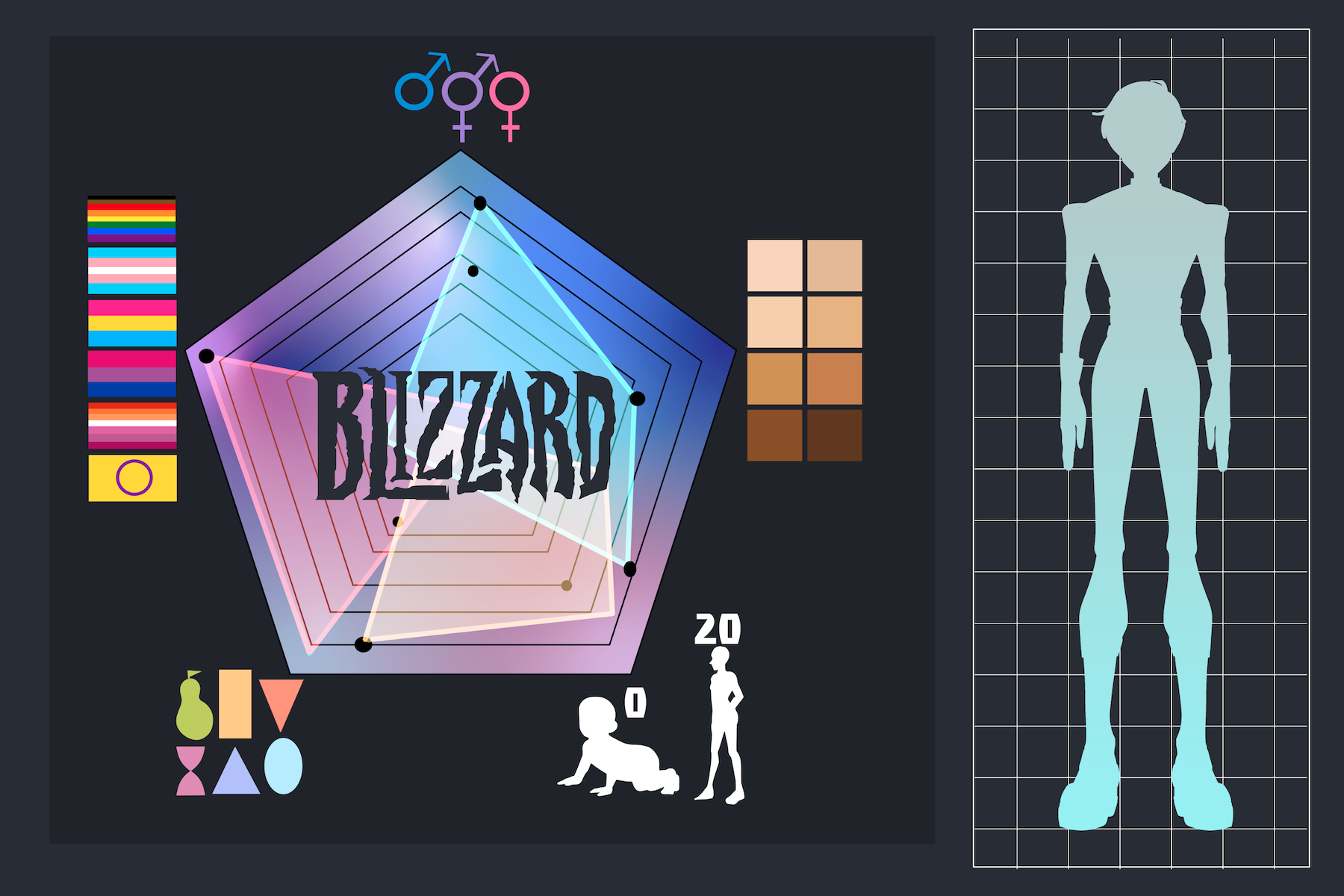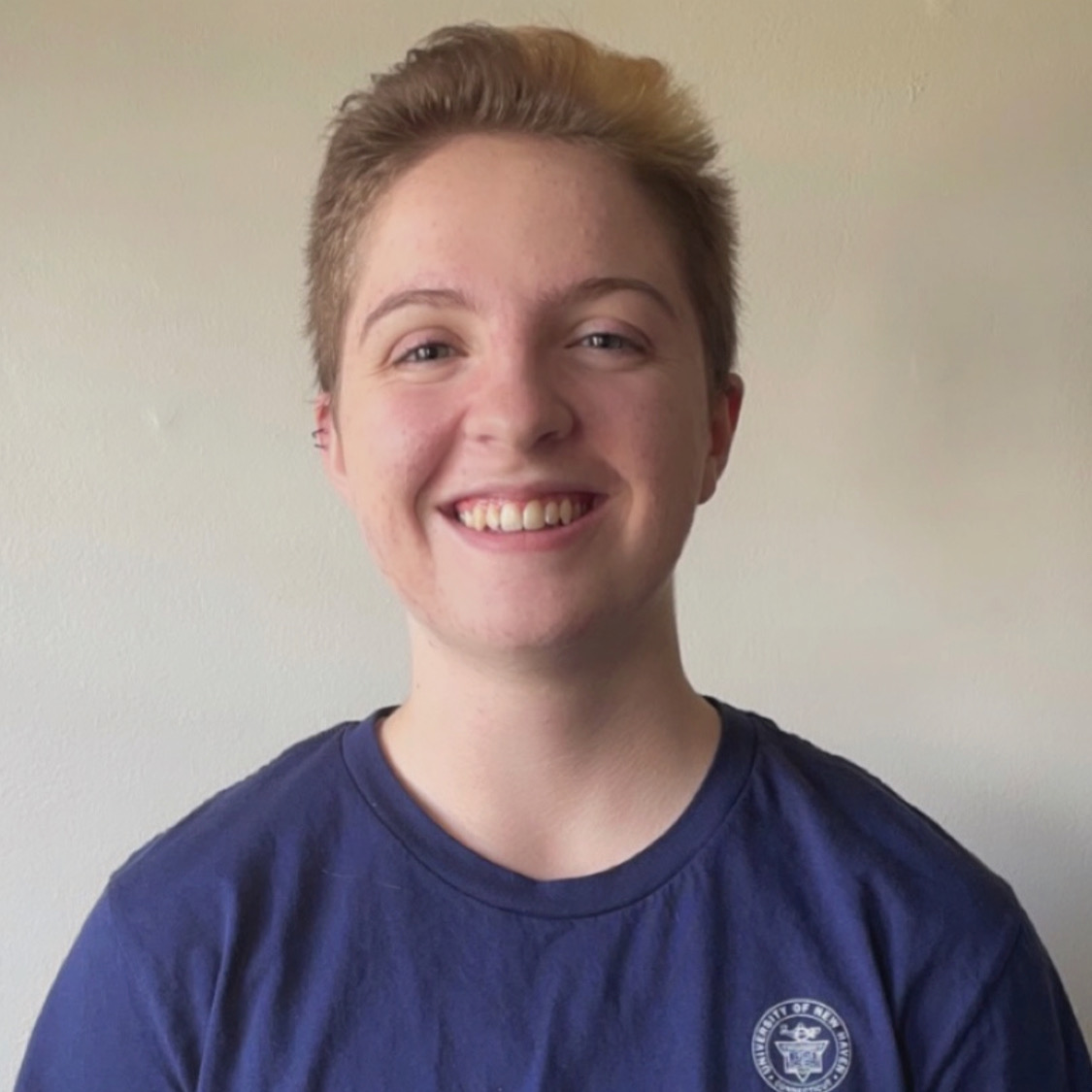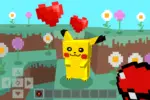Representation is an ongoing issue in any medium, and video games are no exception. Most games are only starting to step out of their comfort zones to use characters and narratives that aren’t about strictly heterosexual, white men. The progress is sluggish, mostly due to gaming demographics that are resistant to these changes. Still, many video game developers are dedicated to promoting diversity in their projects going forward and have made some encouraging strides toward the balanced inclusion of characters from minority backgrounds.
However, certain developers are approaching the issue in some strange ways. Activision-Blizzard, most well-known for developing the Overwatch franchise, created a prototype in 2016 called the Diversity Space Tool, meant to uncover unconscious bias in character creation and dismantle stereotypes found in existing representation. As Activision-Blizzard stated on their website, the tool “was designed as an optional supplement to the hard work and focus our teams … on telling diverse stories with diverse characters.” They insisted it had no real hand in active game development, even though they claimed it was being tested on games like Call of Duty: Vanguard and Overwatch 2.
But how does the tool work? Blizzard’s Diversity Space Tool grades character diversity on a 10-point scale, using categories like age, gender identity, culture, body type, race, physical ability, and so on. It’s fairly obvious that Blizzard hits most of their bumps here, attempting to quantify aspects like culture and sexuality. How do you decide which identities are worth more “diversity points” than others? Questions like that quickly unravel the Diversity Space Tool from a helpful representation metric to an idea that is downright offensive.
These problems are the most glaring when you see the tool in action. One example shows a character from Overwatch named Ana, in which her scores in each category are plotted on a round chart, as pictured in a tweet from Austin Walker. It shows that she was rated the highest in the culture, race and age categories, yet lost points because she could be considered conventionally attractive; this begs a very important question: Where do these numbers come from? Judging from reports from the development team, these numbers are entirely arbitrary and decided on after group discussion. Though Activision-Blizzard insists that their teams are full of diverse perspectives, if that were truly the case, they probably wouldn’t need to defer their judgment to a tool like this.
everyone is seeing the big header image on that actiblizz article, but it was looking at this bigger breakdown is what sent me into space pic.twitter.com/4U4ZKdVrUH
— austin walker (@austin_walker) May 13, 2022
King, the mobile game developer acquired by Activision-Blizzard, showcased the tool at the 2017’s Game Developers Conference in an almost embarrassing presentation. They used their metric to grade the cast of Super Mario, deducting points for the cast’s presumed straightness and adding points back for Mario and Luigi’s Italian ethnicity. Most of the audience and online commenters couldn’t help but laugh at the sentiment, with one Twitter user saying, “This s— is genuinely hysterical.” How exactly do you determine the sexuality of any of the Super Mario characters? It seems like the tool, which was meant to battle the use of stereotypes, requires the use of stereotypes in order to be used against previously existing narratives. There is simply no way to order and quantify cultural traits without leaning into racist, prejudiced ideologies.
On the other hand, some suggest that the tool might have its uses when it comes to finding gaps in representation, as Activision-Blizzard also implies. If they run an entire cast of characters through the Diversity Space Tool and find themselves coming up short in, let’s say, the “body type” category, they know that’s where to shift their focus. However, this still promotes the issue of tokenism, because now the team is going to try and create characters that specifically fill that box rather than creating them organically. It’s a rather dystopian idea: creating an entire system to measure and fill diversity quotas, which completely misses the point behind promoting diversity in the first place.
Though this might just seem like a ridiculous failure on Activision-Blizzard’s part, the Diversity Space Tool represents a larger issue that blocks quality representation; not just in video games, but in popular media as a whole. Many have commented that true representation isn’t born from categorically grading characters or collecting data about their identities, but rather hiring a diverse development team and listening to their input. As Melissa Kelly, a character artist at Activision-Blizzard, tweeted: “Our writers have eyes. The artists: have eyes. Producers, directors, etc, as far as I know also all have eyes.” Diversity in any project comes first from members of the team who are dedicated to including that representation in their work.
If Activision-Blizzard ever addresses the root of the problem, which is the lack of diversity in their workforce, this issue will most likely resolve itself organically, as it should. This shouldn’t be about filling diversity quotas or balancing ratios to mathematically prove what will make audiences happy. If developers genuinely care about the input that marginalized creators bring to the table, it will show in the finished product. Unfortunately, due to a string of sexual harassment and labor lawsuits that Activision-Blizzard has experienced in recent years, it’s no surprise that some employees feel unwelcome in the writer’s room.
The company is trying to push the Diversity Space Tool into other forms of media, like TV, film and literature, but it’s probably for the best if this tool stays as limited as possible. Regardless of how many charts or graphs they create, the truth remains clear: Quality representation is born out of a genuine desire from creators to tell diverse stories, not a categorical instinct to make games more marketable. They’re correct in saying that tokenism and stereotyping cannot offer a valuable replacement to representation, but turning identities into points and scores isn’t the answer. Listen to marginalized developers, gamers from diverse backgrounds, and to your audience when they say that the Diversity Space Tool isn’t the way forward.

















